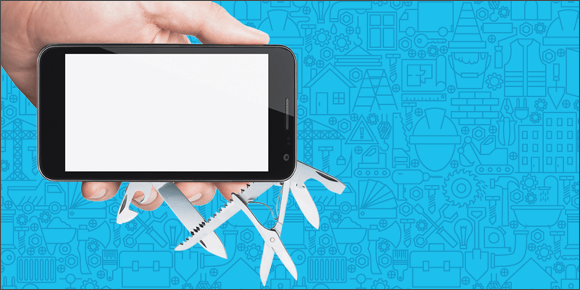The latest technology can help you find buyers, market to sellers, organize your office and maybe even lower your blood pressure. The cutting edge has never been so sharp.
By Matt Alderton
Although they don’t have much in common with software developers, residential REALTORS® are running their businesses more and more like Silicon Valley startups.
“Real estate agents are a diverse group of people, and a lot of them have adopted technology early and done great things with it,” says Alexander Coon, founder and CEO of Piper Crane, a Brooklyn, New York-based residential real estate brokerage that specializes in technology. “You still have some brokers who are low-tech, but overall there’s a generational shift taking place in real estate; more young people are entering the profession, and as a result, real estate is becoming more wired.”
Real estate’s generational shift encompasses not only agents, but also their clients, according to the National Association of REALTORS®, which says millennials—more than half of whom search for homes on their phones, NAR reports—have constituted the market’s largest group of recent homebuyers for three years running.
The implication is clear: To keep pace with their clients and competitors, REALTORS® of all ages must treat technology not as a toy, but as a business tool.
Of course, anyone who wants to leverage the best tools must first assemble the best toolbox. Here are 15 technologies that belong in yours.
 Customer Relationship Management (CRM)
Customer Relationship Management (CRM)
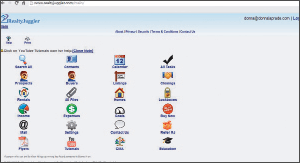 CRM software is the one piece of technology Jorge Roque, CRS, can’t live without. “My CRM allows me to remember everything,” says Roque, a broker with Miami-based America’s Real Estate Force Corp. “One of the main complaints people have about REALTORS® is that we don’t communicate enough. That doesn’t happen with me because my CRM software reminds me to call clients every 10 days, send them a written report every week and mail a handwritten card on their birthday.”
CRM software is the one piece of technology Jorge Roque, CRS, can’t live without. “My CRM allows me to remember everything,” says Roque, a broker with Miami-based America’s Real Estate Force Corp. “One of the main complaints people have about REALTORS® is that we don’t communicate enough. That doesn’t happen with me because my CRM software reminds me to call clients every 10 days, send them a written report every week and mail a handwritten card on their birthday.”
Roque’s CRM of choice is RealtyJuggler ($99/year). Coon recommends Agentdesks ($15/month).
 Territory Management
Territory Management
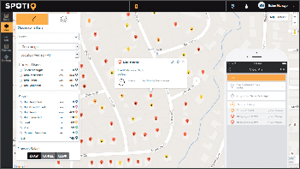 Along with his CRM, Roque uses Spotio (free), a territory-management application that he leverages twice a week when he goes door-knocking. Using a smartphone or tablet, users put pins on a map embedded with notes about where they’ve been and who they’ve met. You also can assign team members to geographic territories for prospecting.
Along with his CRM, Roque uses Spotio (free), a territory-management application that he leverages twice a week when he goes door-knocking. Using a smartphone or tablet, users put pins on a map embedded with notes about where they’ve been and who they’ve met. You also can assign team members to geographic territories for prospecting.
 Video Marketing
Video Marketing
If a picture is worth a thousand words, a good video is worth a million. Matt Fagioli agrees, which is why he recommends BombBomb ($39/month) for delivering video messages that can be pre-recorded and emailed directly to clients, prospects or employees.
“If you were to get a lead from Zillow or Realtor.com, that could trigger a BombBomb video to be emailed to the prospect saying, ‘Hey, I got your message and I can’t wait to talk to you. I’ll call you back soon,'” says Fagioli, founder of the Xplode Conference, an event series that introduces real estate agents to the latest technology. Animoto ($22/month) is a fantastic video editor, he adds.
With Facebook Live (free) and Periscope (free), you also can broadcast live video straight from your smartphone. “You can essentially FaceTime a home tour with somebody,” Coon says.
 Text Messaging
Text Messaging
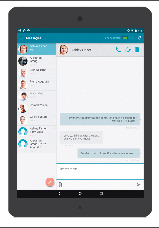 Clients increasingly want to communicate via text. To accommodate them, Roque uses MightyText ($3.33/month), a texting application for Android devices that allows you to compose and schedule individual or group texts from your computer or tablet.
Clients increasingly want to communicate via text. To accommodate them, Roque uses MightyText ($3.33/month), a texting application for Android devices that allows you to compose and schedule individual or group texts from your computer or tablet.
“Let’s say I have an appointment with you a week from today, and I want to send you a text reminder an hour beforehand. I can write it ahead of time and schedule it to go out automatically,” Roque says. “I use it all the time.”
 Screen Sharing
Screen Sharing
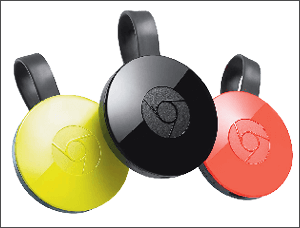 Screen-sharing technology makes it easier than ever to browse the MLS with buyers or present written offers to sellers. Roque uses Screenleap (free), which allows you to share your computer screen with others by sending them a viewing link by email or text message.
Screen-sharing technology makes it easier than ever to browse the MLS with buyers or present written offers to sellers. Roque uses Screenleap (free), which allows you to share your computer screen with others by sending them a viewing link by email or text message.
Vicky Santana, CRS, also utilizes screen sharing thanks to an Apple TV ($149) in her conference room. “We’ll take our Mac devices in there and use the Apple TV to mirror our computer on the big-screen TV to show clients listings or to conduct trainings with our agents,” says Santana, owner and broker at NextHome Santana Real Estate in Vero Beach, Florida.
Google’s Chromecast ($35) offers a similar capability for Android users.
 Scheduling
Scheduling
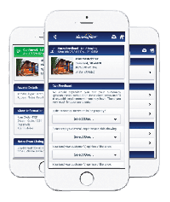 Even a circus performer would have a hard time juggling a REALTOR’s® calendar. Tools like ShowingTime (variable pricing) simplify your life by streamlining the process of scheduling showings; its 24/7 appointment center will schedule and confirm showings on your behalf, or you can do it yourself using the desktop software. And Centralized Showing Service (variable pricing) offers similar services.
Even a circus performer would have a hard time juggling a REALTOR’s® calendar. Tools like ShowingTime (variable pricing) simplify your life by streamlining the process of scheduling showings; its 24/7 appointment center will schedule and confirm showings on your behalf, or you can do it yourself using the desktop software. And Centralized Showing Service (variable pricing) offers similar services.
 Virtual Reality
Virtual Reality
Although it’s still in its infancy, virtual reality is brimming with real estate potential, according to Santana, who last year purchased a Matterport Pro Camera ($4,500 plus $49/month for model processing) that she uses to create 3-D scans of homes that can be shared as virtual tours. 3-D models can be viewed on the web or, for an immersive, 360-degree experience, through a virtual reality headset. Currently, only Samsung Gear VR goggles ($99.99) are supported, but support is expected in the future for alternative devices like Google Cardboard ($15) and Oculus Rift ($599).
“It really elevates the homebuying experience,” Santana says. “It’s not just watching a video; you feel like you’re actually in the property because you can interact with it and walk through it as slowly or as quickly as you want.”
Floored (variable pricing) provides a similar service using computer-aided design (CAD) files to create immersive tours of spaces that have not yet been built.
Meanwhile, virtual tour specialist Obeo (variable pricing) is one of several companies offering virtual staging and virtual styling. The former allows you to populate pictures of empty rooms with virtual furnishings, while the latter allows you to doctor photos of poorly decorated spaces to show what homes will look like stripped of the previous owners’ specific tastes.
 Digital Floor Plans
Digital Floor Plans
Floor plans can help buyers visualize themselves and their possessions in a home—and you no longer need a tape measure to create them. For example, check out RoomScan Pro ($4.99). Once you download the iOS app, all you need to do is walk around the room and hold your device on the wall to automatically create a digital floor plan to share with buyers.
 3-D Printing
3-D Printing
 If you’re selling a home that hasn’t been built yet, or one that will require extensive renovations, you’ll need to help potential buyers visualize the end product. Floor plans and virtual reality can help, but for the most imagination-challenged buyers, consider a 3-D printed model. You can print one yourself by acquiring the CAD files for a new or renovated home, then printing them on a desktop 3-D printer like the MakerBot Replicator ($2,899).
If you’re selling a home that hasn’t been built yet, or one that will require extensive renovations, you’ll need to help potential buyers visualize the end product. Floor plans and virtual reality can help, but for the most imagination-challenged buyers, consider a 3-D printed model. You can print one yourself by acquiring the CAD files for a new or renovated home, then printing them on a desktop 3-D printer like the MakerBot Replicator ($2,899).
 Mileage Tracking
Mileage Tracking
Travis Waller, CRS, spends a lot of time—and money—in the car. One of his favorite apps, therefore, is MileIQ ($5.99/month), which uses your phone’s GPS to automatically detect and log tax-deductible business mileage. “At the end of the month you receive a PDF of your business and personal drives. I send that to my accountant every month, which last year saved me $5,000 on my taxes,” says Waller, of Friedberg Properties & Associates in Englewood Cliffs, New Jersey.
 Predictive Analytics
Predictive Analytics
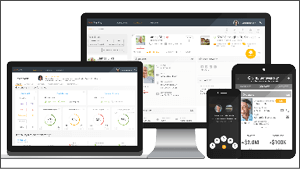 It can take a lot of time and experience to guess when homeowners might move and then to effectively target those on the verge of packing boxes. Predictive analysis services can take some of the guesswork out of the process and help streamline your direct marketing in the process. Companies like SmartZip and RealAgile will predict when consumers are ready to sell their homes and send automated marketing campaigns to those most likely to sell.
It can take a lot of time and experience to guess when homeowners might move and then to effectively target those on the verge of packing boxes. Predictive analysis services can take some of the guesswork out of the process and help streamline your direct marketing in the process. Companies like SmartZip and RealAgile will predict when consumers are ready to sell their homes and send automated marketing campaigns to those most likely to sell.
 E-signatures
E-signatures
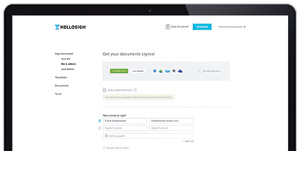 Regardless of size or type, there’s at least one thing every real estate transaction needs in order to close: signatures—lots and lots of signatures. An eSignatures app can help you get them from buyers and sellers quickly and easily, according to Waller, whose app of choice is HelloSign ($13/month).
Regardless of size or type, there’s at least one thing every real estate transaction needs in order to close: signatures—lots and lots of signatures. An eSignatures app can help you get them from buyers and sellers quickly and easily, according to Waller, whose app of choice is HelloSign ($13/month).
 Safety
Safety
Their jobs can sometimes send REALTORS® into unsavory neighborhoods and situations. To ensure his own safety and that of his team members, Roque uses bSafe (free), a personal safety app that allows users to create a “social safety network” of people who receive your GPS location and a call for help in case of an emergency.
 Home Searching
Home Searching
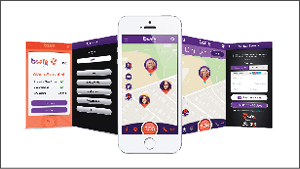 You’ve heard of Big Data. Now, solutions exist to help you leverage it for real estate, according to NAR Director of Member Engagement Nobu Hata. Case in point: RealScout, a cutting-edge home search platform that aggregates and analyzes hundreds of data points for every listing to help buyers find properties with hard-to-search-for features, such as remodeled kitchens, natural light, high ceilings or big backyards.
You’ve heard of Big Data. Now, solutions exist to help you leverage it for real estate, according to NAR Director of Member Engagement Nobu Hata. Case in point: RealScout, a cutting-edge home search platform that aggregates and analyzes hundreds of data points for every listing to help buyers find properties with hard-to-search-for features, such as remodeled kitchens, natural light, high ceilings or big backyards.
 Transaction Management
Transaction Management
Cloud-based services are ideal for transaction management, according to Sheila Moylan, CRS Candidate, who uses Google Calendar and Google Drive for exactly that purpose. “Every transaction has its own Google Calendar that I use to track all the activities and appointments for my buyers and sellers,” says Moylan, of Century 21 Commonwealth in Westwood, Massachusetts. “Same thing with Google Drive: Every transaction gets its own folder where I put all relevant documents, emails and pictures so I can always access them.”
In addition to keeping her organized, the tools keep her clients informed. “Instead of me calling my sellers every single day, they can look at Google Calendar whenever they want to see how many showings I’ve done and find out what’s next in the selling process,” Moylan continues.
Transaction management app Road to Close ($49/transaction) is another option, allowing brokers to map and manage every step of the home purchase or sale—from contract to close—so clients know what is supposed to happen, and when.
 Drones
Drones
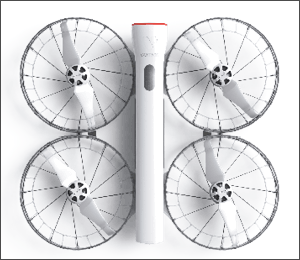 For now, the Federal Aviation Administration (FAA) generally prohibits the commercial use of drones by real estate agents, unless they have applied for and received what’s known as a Section 333 waiver. However, regulations are expected to loosen in the future to allow more widespread use of drones, which could be utilized for taking aerial photos of properties and giving remote showings via live video.
For now, the Federal Aviation Administration (FAA) generally prohibits the commercial use of drones by real estate agents, unless they have applied for and received what’s known as a Section 333 waiver. However, regulations are expected to loosen in the future to allow more widespread use of drones, which could be utilized for taking aerial photos of properties and giving remote showings via live video.
“I’m waiting to see what happens with the regulations, but I’ve already pre-ordered my own drone,” says Santana, who expects to receive her Snap ($1,295) flying camera this fall.
A Final Tip
Finding useful tools is easy. The real challenge is determining which ones are worth using. To decide, think “high-touch” instead of “high-tech,” advises Hata. “The one thing every broker and agent should ask themselves before they start using a new piece of technology is: Will this make my clients’ lives easier?” he says. “If it will make your clients’ lives easier, it will make your life as an agent easier, as well.”
Fast Facts: REALTORS® and Technology
- REALTORS® spend a median 44 percent of their time corresponding with and doing work for clients on mobile devices.
- The vast majority of REALTORS® (94 percent) communicate with clients using their mobile device.
- Approximately a quarter of agents (27 percent) and brokers (21 percent) spent between $501 and $2,000 on technology in the last 12 months.
- The three tools REALTORS® plan to purchase or replace most often in the next year are their iPad (16 percent), smartphone (15 percent) and digital camera (12 percent).
- 9 in 10 REALTORS® use social media.
Source: 2013-2014 REALTORS® Technology Survey, National Association of REALTORS®

